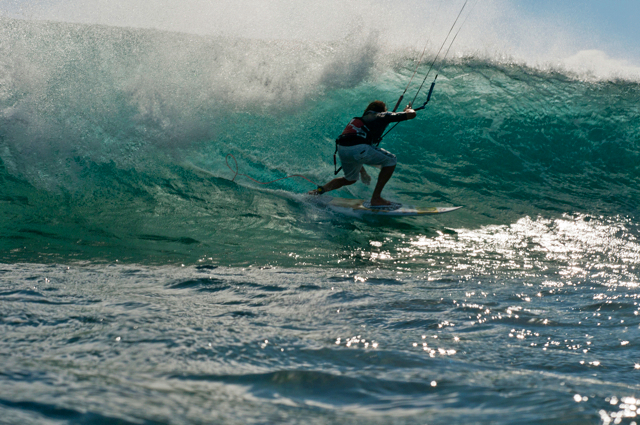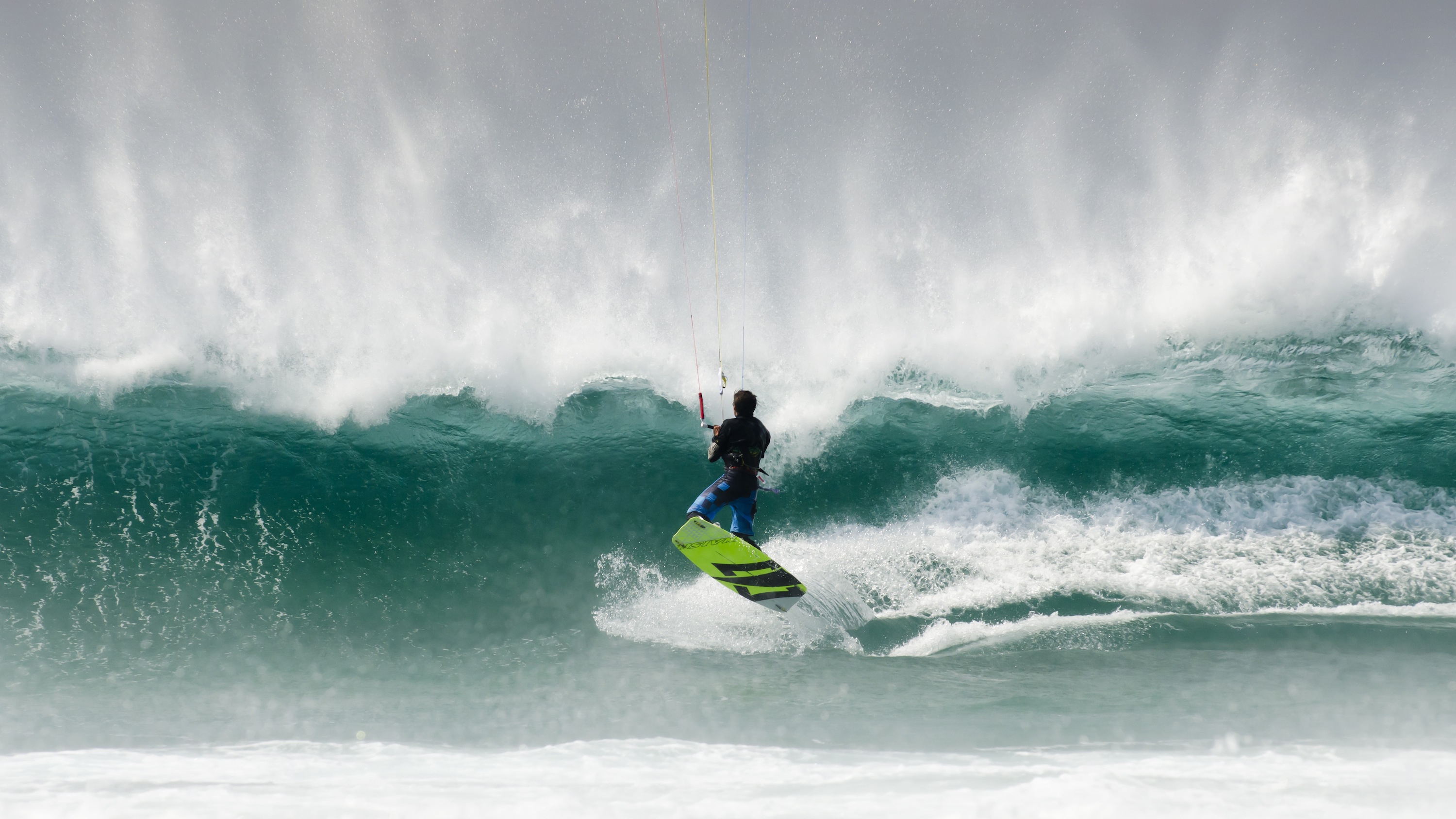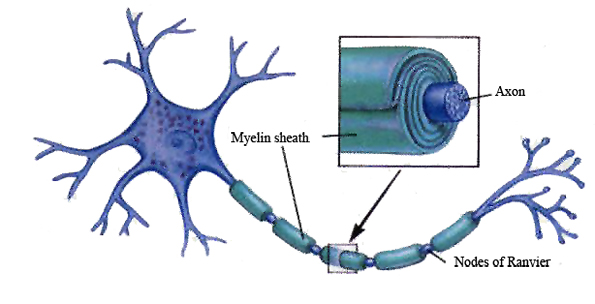
Our teaching philosophy at Tantrum Kitesurf consists of 2 major elements, (actually it also incorporates a third element of Total Immersion but we’ll save that for another time).
- Deep Practice
- Learning In A Peak State
What is Deep Practice?
- Deep practice is a method of learning.
- It’s the principle on which our entire training is based.
- It enables you to learn months with material in minutes.
(We have gone over the next few paragraphs in the blog post on becoming a Kitesurfing Rockstar. So if you read that you may want to skip ahead.)
Scientists have recently made some major breakthroughs in the science of learning. The discovery of the function of a substance called myelin has been foremost in this revolution.
Myelin is a white substance found in the brain. Up until now has been very uncertain what the exact role of myelin was. Recent advancements in neuroscience have indicated that myelin has an absolutely crucial role in skill acquisition. We all know that to do anything a sequence of neurons needs to be fired in the brain so for example if you want to use your right hand to pick your nose – that action starts in the brain with a series of neural impulses traveling down from the brain and nervous system into your arm and finally your finger.
 What myelin does is coat this pathway so every time that skill is triggered (i.e. every time you go to pick your nose) a little bit of myelin is produced which wraps around the neural pathway that links your brain to your chosen picking finger.
What myelin does is coat this pathway so every time that skill is triggered (i.e. every time you go to pick your nose) a little bit of myelin is produced which wraps around the neural pathway that links your brain to your chosen picking finger.
This myelin sheath isolates the pathway from interference and speeds up communication along the pathway turning what in effect is a dial-up modem connection into an Internet superhighway over time and repeated practice. By making the pathway faster and more precise we can fine tune our nose picking until we become experts in it. The more myelin path is coated in the faster and more precise the corresponding action will be.
Talent Isn’t Born…It’s Grown.
The quite startling implications of this is the talent isn’t born, it is grown. From while certain people may have obvious physical advantages i.e. fitter, stronger, more flexible there was really no such thing as born talent what we are witnessing and we see people who appear to be naturals in a new sport is generally a mix of physical advantage combined with crossover skill sets.
So how do we get the brain to produce myelin and then get the right pathways coated? You’ve got it…Deep Practice.
A simple definition of deep practice would be purposefully operating at the edge of your ability, forcing yourself to screw up, working on your technique, seeking constant critical feedback and focusing ruthlessly on shoring up weakness.
That’s all great but how does it apply to kite surfing?
If we take a skill such as learning to water start. The 1st thing we need to do is define the mega circuit. The mega circuit is the entire movement in one large chunk. For our example the rider going from being sat in the water to gracefully exiting the water and starting to ride.
If you watch this movement over and over and over again and simply absorb it and then practice the movements our nervous system starts to get a feel for the movement (and myelin starts flowing) even if no equipment is involved.
Reread that last line as it is crucial.

Spartak tennis club is a tiny tennis club in Russia which over the last few years has produced more top 20 women’s players than the entire United States and is responsible for nurturing the talent of players such as Anna Kournikova…I know it’s a poor attempt to justify my inclusion of a picture of her, but the link is there…however tenuous!
At Spartak the girls don’t play a competitive match for 3 years (competition gets in the way of skill acquisition) and during those 3 years much of the practice is spent without a ball. The coach simply has young ladies practice the motion of hitting the ball over and over and over again…dry (ie with just a racket no ball, net or opposing player) focusing ruthlessly on the technique. When a ball is eventually introduced the mega circuit is firmly in place. This method removes other distractions such as chasing the ball, anticipating the spin etc and concentrates solely on the skill in question.
From the mega circuits we then break the action down to its smallest definable parts, memorise these pieces and then string them back together again. To go back to our example of the water start we could break it down into putting the board on your feet, practising the power stroke, raising up out of the water, pointing your board in the correct direction, and ensuring your body is in the right position as you move off to ride.
From there we can play with time to slow down and then speed up the action to discover its architecture. Performing it at a glacial pace and then at real-time speed. This enables us to really get inside the skill and know it inside out.
And there lies the formula for deep learning.
There is one caveat with deep learning. When you leave your deep learning zone you may as well quit. And most people can stay in the deep learning zone for an hour or 2 at best.
The Power of Peak State
Your brain is simply a lump of meat until it is activated. The most powerful way of activating it is to put yourself into a peak state. A peak state is when you feel any emotion intensely – however in our case we are looking for positive emotions, excitement, joy, ecstasy, happiness or determination.
Why Is This Important?
Because being in a peak state allows you to stay in your deep learning zone for longer.
 So how can you put yourself in a peak state? The simple answer is to celebrate. Celebrate all your victories even the little ones, heck, especially the little ones (then you get more chances to celebrate!). How you do this? After every exercise or learning attempt look for the good in what you have just done no matter to how small it may be. If you can combine this mental celebration with a physical act all the better. What do I mean by that?(and I fully concur…this is where we get a little American) giving yourself a little pat on the back, a solo high-five, a fist pump and I defy any of you, that any of you to stay in a bad mood whilst you’re grinding your hips with that oh so sexy look on your face.
So how can you put yourself in a peak state? The simple answer is to celebrate. Celebrate all your victories even the little ones, heck, especially the little ones (then you get more chances to celebrate!). How you do this? After every exercise or learning attempt look for the good in what you have just done no matter to how small it may be. If you can combine this mental celebration with a physical act all the better. What do I mean by that?(and I fully concur…this is where we get a little American) giving yourself a little pat on the back, a solo high-five, a fist pump and I defy any of you, that any of you to stay in a bad mood whilst you’re grinding your hips with that oh so sexy look on your face.
What Do These Actions Do?
They immediately change your physiology and if combined with the shift in focus onto what we have achieved (as opposed to what we screwed up) we can anchor the desire to learn and the feeling of achievement deep in our nervous system which in turn craves more and so keeps us in our deep learning zone for longer.
This may seem silly and I admit some of our clients do look rather silly on the beach as they grind their hips and I’ve lost count of the amount of passing girls that have got the wrong idea as I attempt to get people to do the grind, but the philosophy is the sound.
By keeping yourself focused on what is going well, by keeping yourself in a peak emotional state you are able to stay in this deep learning zone for longer which ultimately means you progress quicker, cheaper and with more enjoyment than your non grinding partner.


